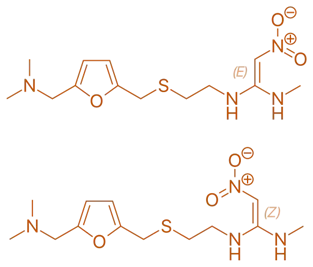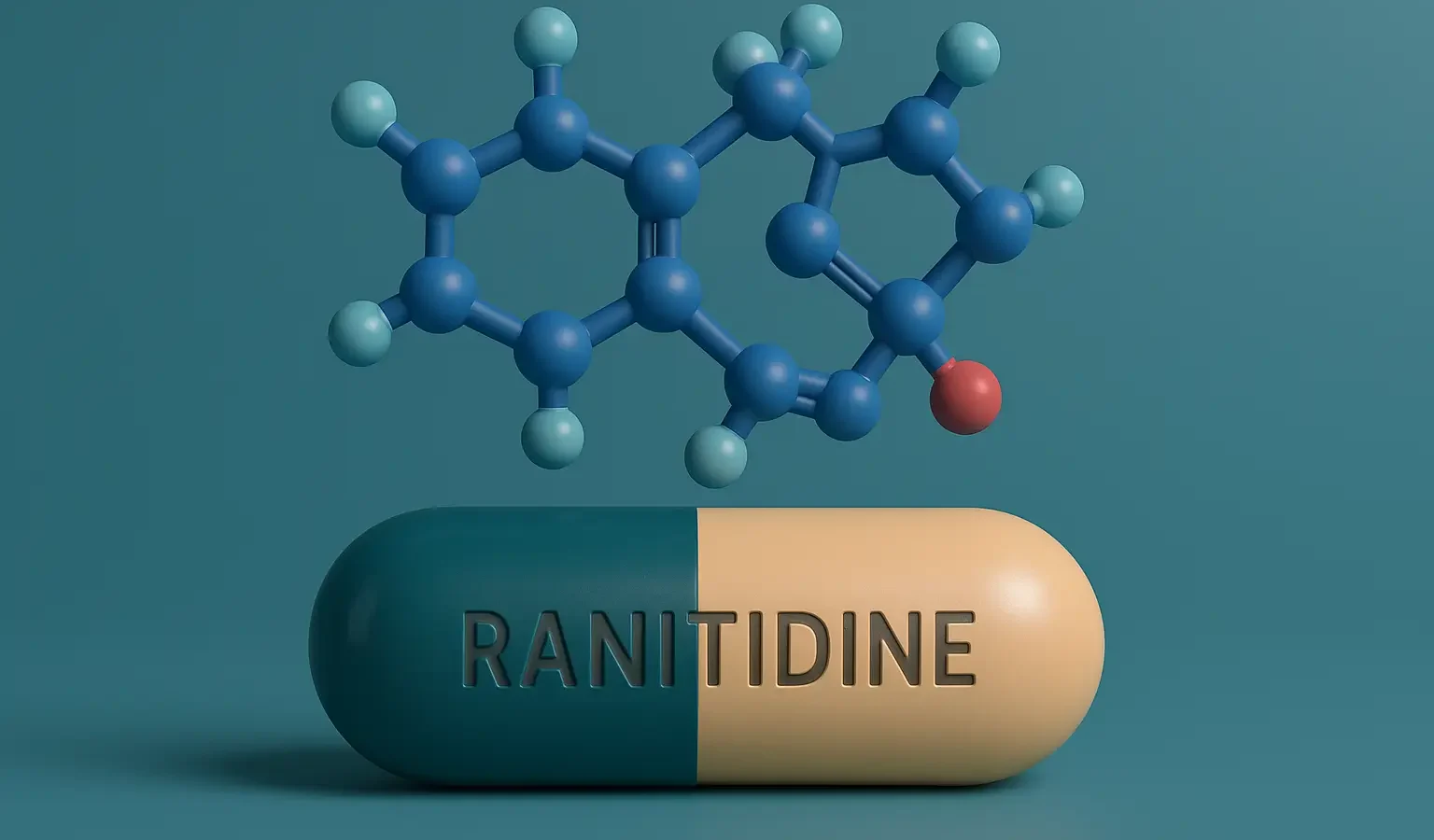Ranitidine is an H₂-receptor antagonist used to reduce stomach acid in conditions like ulcers, GERD, and acid reflux.
Structure of Ranitidine
- It is a second-generation H₂-receptor antagonist featuring a furan ring connected to a dimethylamine side chain and a nitro group.
- Chemical Formula: C₁₉H₂₈N₄O₃S

Mode of Action
- Ranitidine selectively blocks H₂ receptors on gastric parietal cells, thereby inhibiting gastric acid secretion.
- It has a longer duration of action and greater receptor selectivity compared to first-generation H₂ antagonists.
Uses
- Peptic Ulcers: Promotes ulcer healing by reducing acid levels.
- GERD: Alleviates heartburn and acid reflux symptoms.
- Zollinger-Ellison Syndrome: Manages conditions with excessive acid secretion.
- Prevention of Stress Ulcers: Used in hospitalized patients to prevent ulcer development.

